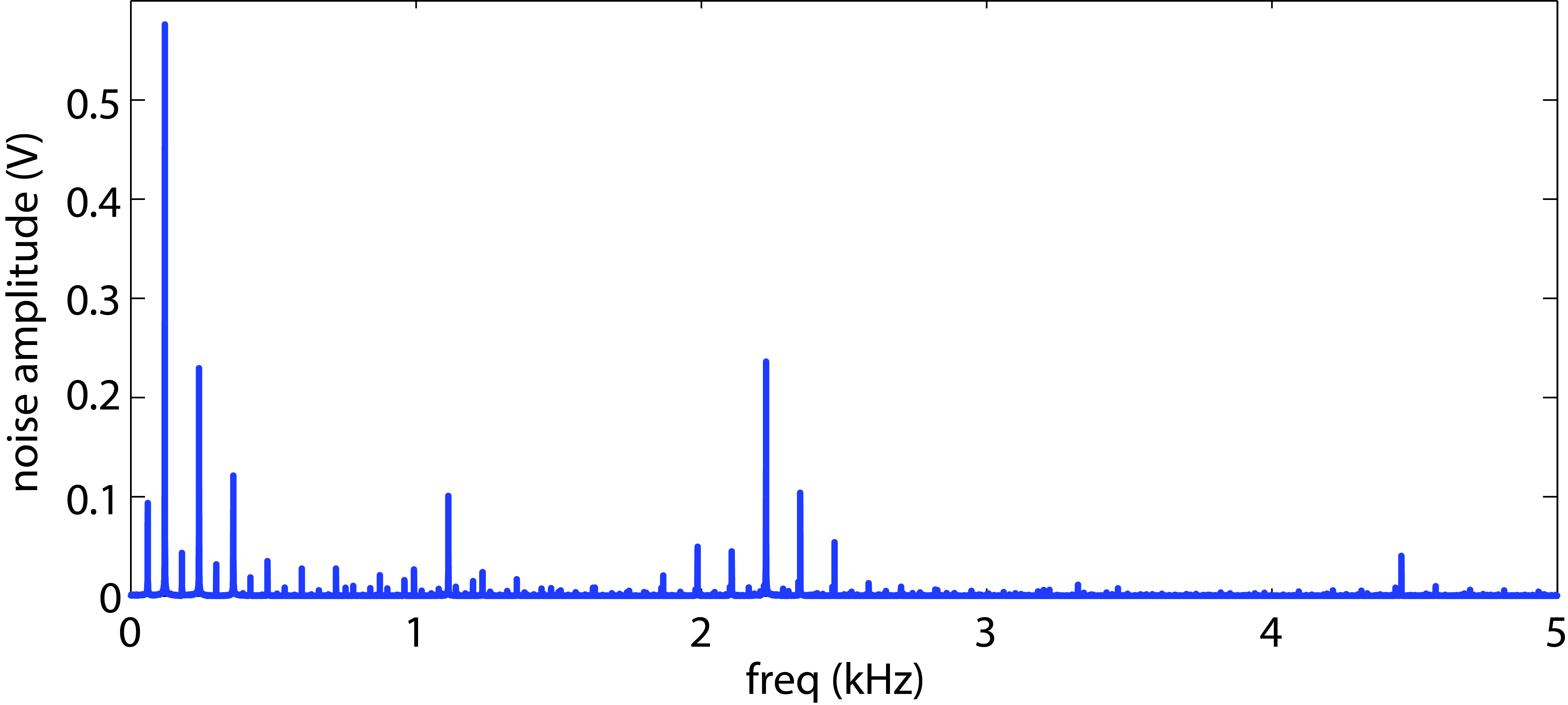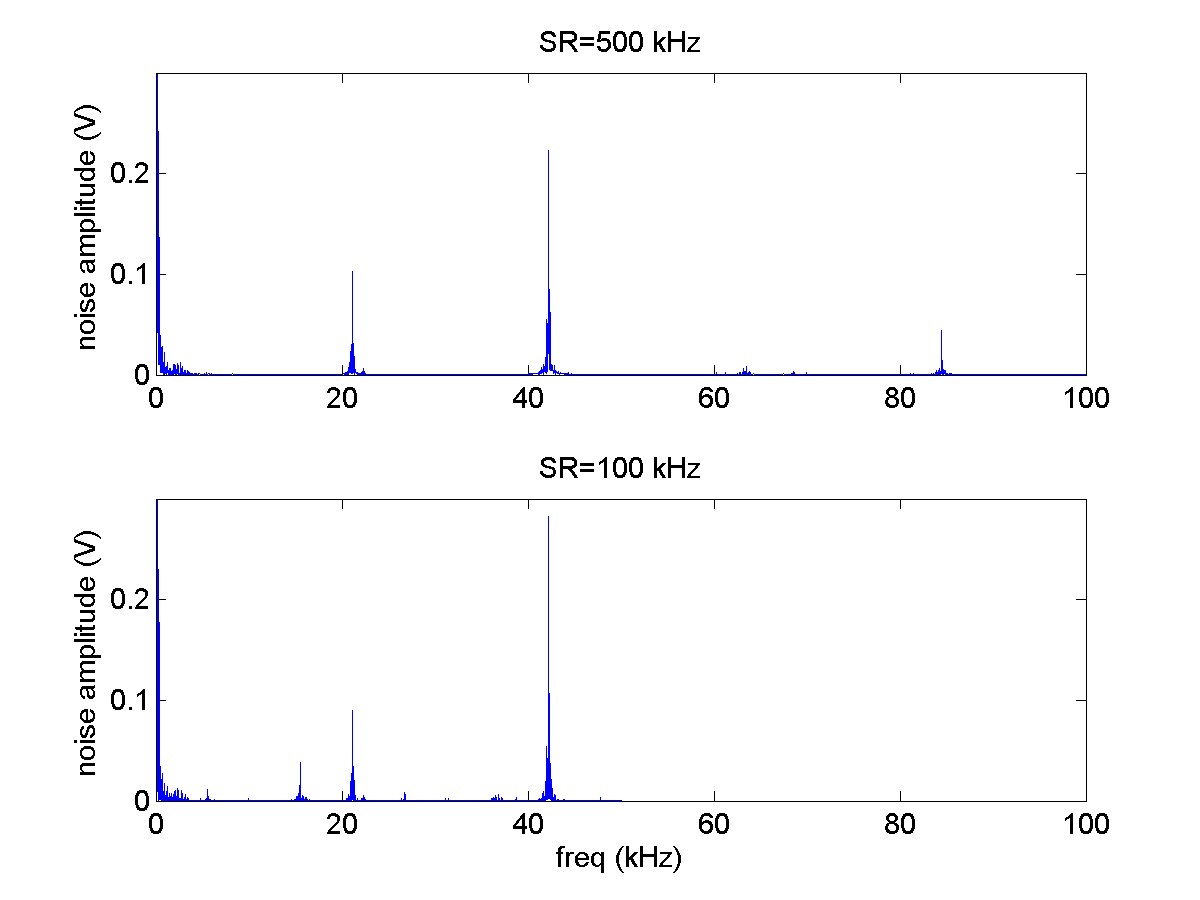User Tools
This is an old revision of the document!
We decided to use a sample rate of 10 kHz. This figure shows the signal collected when the receiver is pointed at the room lights and the sample rate is set at SR=10 kHz. This signal is entirely noise.
The signal amplitude would need to be larger than the noise spikes otherwise the system would record a hit every time the gun picked up the room lights. So it would be good to reduce the noise if possible.
The first step is to determine if the noise has the frequency components shown in the previous plot or if it is an aliased signal. The next plot shows the same noise signal collected at sample rates of SR=500 kHz and SR=100 kHz. The signals that line up in frequency are the actual frequencies. As you can see, the dominant noise frequencies are around 20 kHz and 40 kHz. There is also another noise spike around 85 kHz. With a sample rate of SR=100 kHz this signal gets aliased down to around 15 kHz.
The noise spikes above 5 kHz need to be eliminated before the signal is down-sampled to 10 kHz. So in essence the system will use a digital low pass filter



